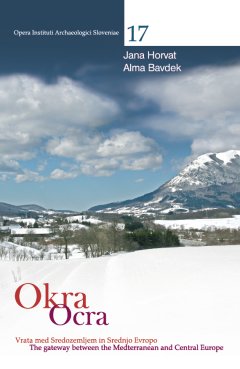 Institute of Archaeology Institute of Archaeology |
[Slovenian] |
| Home | Members | Programme | Projects | Laboratory |
| Database | Publications | Library | Links | Archive |
The routes between the north Adriatic and the Apennine peninsula on the west and the Balkans and the central Danubian plains on the east ran across Razdrto ever since ancient times. In the late prehistory and in the early Roman era the pass of Razdrto was known under the name of Ocra as was the mountain above it. Several Bronze age sites were discovered in the area of the Razdrto pass. The posts in the Razdrto area from the end of the 2nd and first half of the 1st century BC (Mandrga, Preval) differ from the other sites along the east Alpine routes, as they were not spatially linked to any of the existing indigenous settlements and did not show any contact with the surroundings even with their small objects. Most of the remains can be explained as traces of Roman passengers who stopped at Razdrto for a shorter period of time and not as remnants of a significant Roman settlement. A gravel covered road was constructed across the Razdrto pass in the second half of the 1st century BC or in the Augustan period. A roadside building was erected in the middle or late Augustan period and demolished in the mid 1st century AD. The shift of transit from Razdrto to Hrušica (Ad Pirum) took place in the 1st century AD. Post 1st century AD written sources no longer mention the road across Ocra, and the archaeological remains dating after the mid 1st century AD are extremely modest at Razdrto. *** 2009, (Opera Instituti Archaeologici Sloveniae, 17), 248 pgs., 64 colour photos, 66 b-w drawings, photos, graphs and maps,13 tables, 52 plates, 20 x 29 cm, hardback, ISBN 978-961-254-163-7. |

